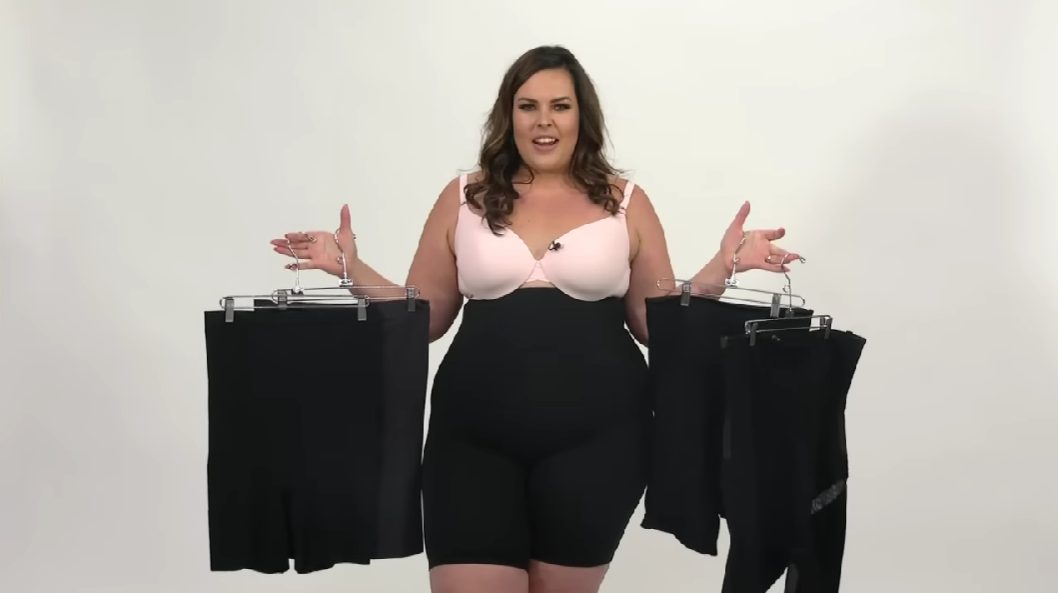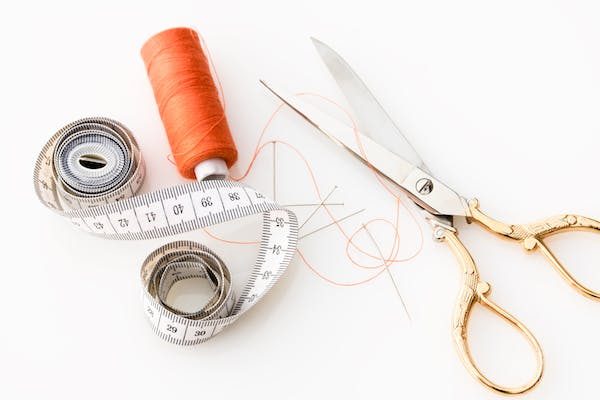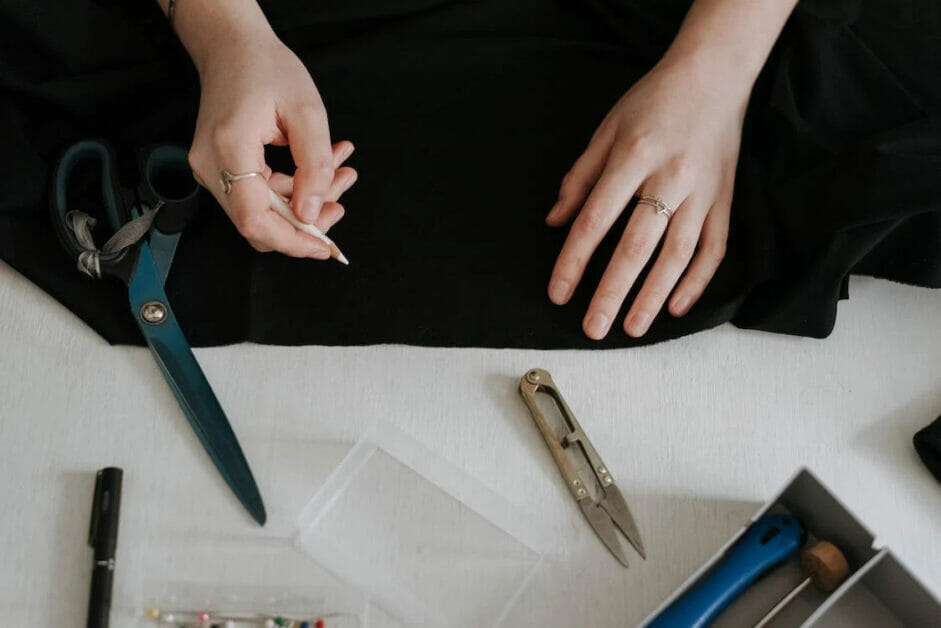
Can You Cut Spanx Without Ruining Them? (Let’s Find Out)
Spanx, in particular, has been a game changer for many people, myself included. But sometimes, we find ourselves needing to tweak our Spanx for various reasons—be it length, fit, or comfort. The question is, can you cut your Spanx without compromising their integrity?
Yes, it’s possible to cut or alter your Spanx without ruining them. However, it’s not as simple as snipping away with any old pair of scissors. To ensure a successful modification, it’s crucial to approach the task with precision and the right tools.
So, let’s dive in!
Can You Cut Spanx Without Damaging Them?
Scissors and Techniques

You need to use a good pair of scissors, and be extra careful when making cuts. Sharp fabric scissors are the best choice for getting a clean cut that won’t cause any damage.
When cutting your Spanx, make sure to do it slowly and with precision. You should also consider where you’re cutting, as different areas of the garment will have different tension levels.
Plan your cuts carefully, avoiding seams or high-tension areas that could cause the garment to lose its shape or become damaged.
How to Cut Spanx Properly
Measuring for the Proper Fit
When I decided to cut my Spanx, I first needed to ensure I had the proper fit.
I grabbed my trusty measuring tape to get the right measurements and started measuring the areas that needed the most support, especially around my tummy and thighs.

I aimed to create a snug but comfortable fit to avoid any discomfort or rolling down.
Tools and Techniques

Once I had my measurements, it was time to gather my tools. I gathered some sharp fabric scissors, a fabric marker, and a sewing machine for any necessary touch-ups.
- Making the Cut: I carefully started cutting my Spanx using scissors based on my earlier measurements. The key was to ensure I cut smoothly and evenly so the finished product wouldn’t have jagged edges or uneven seams. Cutting slowly and carefully ensured a precise and clean result.
- Marking the Edges: To avoid fraying or unraveling, I used a fabric marker to make clear lines where the cuts were made. This gave me a better visual guide and helped prevent errors while adjusting.
- Sewing the Seams: Finally, although not always necessary, I sewed the edges with my sewing machine for added reinforcement and longevity. This step gave my altered Spanx a professional finish and ensured they’d last through multiple wears and washes.
Now, my Spanx fit just how I want them to, and I can comfortably wear them with any outfit.
Cutting and adjusting Spanx at home is totally doable if you’re meticulous and patient.
Comparison of Spanx Alteration Techniques
There are a few different methods you can use to alter your Spanx, each with its pros and cons:
| Technique | Description | Pros | Cons |
|---|---|---|---|
| Snip-and-Stitch | Carefully cutting and sewing Spanx to desired length without compromising their shape or function | – Allows customization and tailored fit – Preserves the original integrity of Spanx | – Requires sewing skills – May leave visible stitches – Time-consuming process |
| Hemming | Shortening Spanx by folding and securing the fabric with adhesive or stitches | – Quick and easy alteration – Minimal risk of damaging the fabric | – Limited to shortening only – May cause uneven or bulky hems – Doesn’t allow for customization – Altered length cannot be reversed |
| Layered Cut | Cutting a small section from the Spanx and layering it over another pair | – Allows precise customization – Offers controlled length adjustment – Retains the original functionality | – Requires cutting and sewing skills – May compromise the overall structural integrity – Visible seam lines may be noticeable – Complex alteration requiring attention to detail |
| Waistband Alteration | Adjusting waistband size for a better fit | – Target-specific fitting issue – Retains original fabric integrity – Reversible alteration | – Requires sewing skills – Potential damage if done incorrectly – Limited effectiveness for overall garment length |
Try the alterations on an old or inexpensive pair of Spanx before attempting them on a preferred or expensive pair.
Tailoring Services

If you’re uncomfortable cutting your Spanx yourself or are worried about damaging them, getting them tailored by a professional might be a better option.
Many tailors have experience working with shapewear and can properly modify your garment without causing any harm.
Finding a tailor who works with Spanx guarantees your garment is not damaged.
They have the expertise to cut and sew your shapewear in a way that retains the integrity and functionality of the piece.
Just remember to factor in the cost – sometimes, professional alterations can be pricey – but it’s definitely worth it for the peace of mind of knowing that your Spanx is in good hands.
In the end, cutting your Spanx without damaging them is possible, whether you do it yourself or enlist the help of a professional tailor.
Material Matters: Understanding Shapewear Fabric
Understanding the Fabric of Your Shapewear
Shapewear is designed to contour and compress, creating a seamless and flattering silhouette under your clothing. The effectiveness of shapewear is largely due to its unique blend of materials. Before you consider altering your Spanx or any shapewear, it’s crucial to understand the fabric you’re working with.
Common Shapewear Materials
- Nylon: A popular choice for shapewear, nylon is stretchy and durable. It’s also lightweight and wicks moisture away, making it comfortable for long wear. However, nylon can fray or ladder if cut improperly.
- Spandex (also known as Lycra or Elastane): This synthetic fiber is known for its exceptional elasticity. It’s often blended with other materials to provide the stretch that allows shapewear to snap back into shape after stretching.
- Cotton: Sometimes used in shapewear for its breathability. Cotton blends are less common but can be found in pieces designed for comfort or extended wear.
How to Handle Different Materials
- Cutting Nylon and Spandex: When cutting blends of nylon and spandex, use very sharp scissors to prevent jagged edges. Avoid cutting too close to seams where the tension is highest, as this can cause the garment to unravel or lose its shape.
- Sewing Cotton Blends: If your shapewear contains cotton, it may be more forgiving when sewn. Cotton doesn’t slip as much as synthetic fibers, making it easier to handle with a sewing machine or needle and thread.
The Role of Fabric Weave in Shapewear
The weave of the fabric also affects how shapewear behaves when cut. A tighter weave will generally fray less but may also be more challenging to cut cleanly. Inspect the weave of your shapewear to determine the best cutting technique.
Preventing Fraying in Synthetic Fabrics
Synthetic fabrics like nylon and spandex are prone to fraying once cut. To prevent this, you can:
- Apply a small amount of fray-preventative liquid along the cut edge.
- Use a heat-sealing method with a tool designed for synthetic fabrics (be cautious to avoid melting the fabric).
- If you’re skilled with a sewing machine, a zig-zag stitch along the edge can also help prevent fraying.
Stretch and Recovery Post-Cutting
One of the most critical aspects of shapewear is its ability to stretch and then recover its shape. When cutting into shapewear, you’re altering this delicate balance. Be mindful that cutting may affect the overall stretch and fit of the garment.
Final Thoughts
Whether you decide to cut your Spanx yourself or get them professionally altered, the key is to proceed with caution. Always test alterations on an older or less expensive pair first. With the right approach, you can customize your Spanx to meet your needs without sacrificing their quality.
References
Books:
- “The Fashion Design Reference & Specification Book: Everything Fashion Designers Need to Know Every Day” by Jay Calderin: Amazon.
Websites:
- Threads Magazine: https://www.threadsmagazine.com/
- Sewing Pattern Review: https://sewing.patternreview.com/
Videos:
Cityline
Frequently Asked Questions (FAQs)
Will cutting my Spanx ruin their shape?
Not necessarily. If done carefully with the right tools, you can cut Spanx without ruining their shape. Use sharp fabric scissors and cut slowly to avoid fraying.
Can I alter Spanx to fit better around my waist?
Yes, you can make alterations to the waistband for a better fit. However, this is a delicate process that might be best handled by a professional tailor to maintain the integrity of the elastic.
Is it possible to shorten the legs of my Spanx?
Absolutely. The legs of Spanx can be shortened, but it’s important to hem the edges post-cutting to prevent rolling up or fraying.
How do I prevent the edges from fraying after cutting?
You can use a fray check solution or apply a light stitch with a sewing machine along the cut edge to seal it.
Can I alter Spanx with a standard sewing machine?
Yes, most sewing machines will work, but you should use a ballpoint needle and elastic thread to accommodate the stretchy fabric.
Do I need any special skills to alter my Spanx?
Basic sewing skills are helpful, especially if you plan to stitch the edges after cutting. If you’re not confident, a tailor can do it for you.
What should I do if I mess up while cutting?
If the Spanx are still wearable, you can try to even out any mistakes with careful trimming. If they’re beyond repair, consider repurposing the material for something else, like a pocket bra insert.
Are there any alternatives to cutting my Spanx?
Yes, you can try using fashion tape, safety pins, or even special clips designed for shapewear to adjust the fit temporarily without cutting.
How do I know where to cut?
Wear the Spanx and mark the areas you want to cut with a fabric marker. Ensure you’re not cutting too much off by measuring twice before making any cuts.
Can I return or exchange altered Spanx?
Altered Spanx are generally not eligible for return or exchange. It’s best to be certain before making any permanent changes.